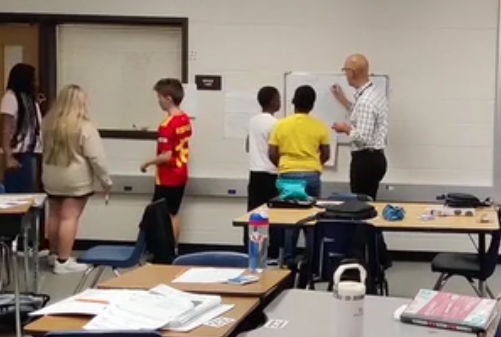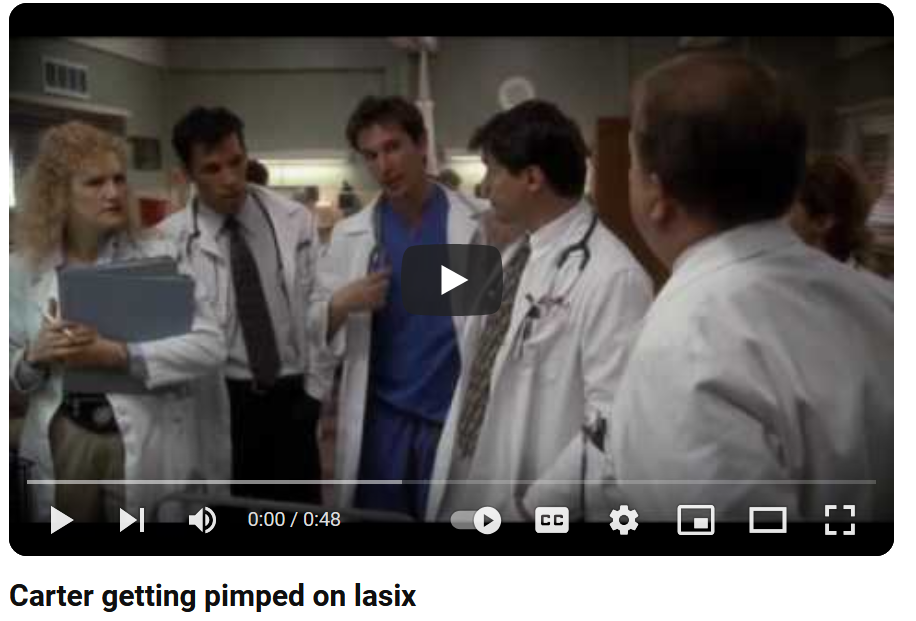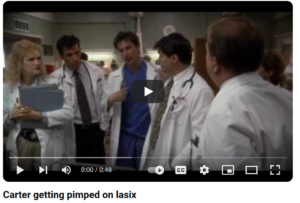
The challenge is real…
I’m pretty cautious about “group work.”
It can be beneficial but the “can be” should be in italics because it has endemic problems that are often over-looked. One of which is the fact that it can be really hard to ensure that everyone is working, thinking and benefitting.
The happy buzz of voices in the classroom, just far enough away that you can’t really hear what they are saying, can be a recipe for happy collusion: I will let you go off to the corners of the room and we will both pretend the optimal case is occurring.
So I was very happy to read a brilliant blog post by my friend, colleague and TLAC Fellow (see below) Doug Doblar of Bay Creek Middle School in Gwinnett County, Georgia, that uses the TLAC technique Cold Call to solve some of group work’s endemic problems.
Here’s how Doug describes the endemic problems of group work:
One of the challenges that requires constant vigilance … is assuring that every member of a group thinks and learns during the day’s thinking task. There are quite a few ways this can go wrong, I’ve found:
-
- One or two students in the group form a quick understanding of the new topic and race forward, leaving the other member or members of the group in the dust
- One or two students in the group do not form a very quick understanding of the topic, but are afraid to say so, so they feign an understanding, allowing the other member or members of the group to similarly leave them in the dust
- One or two students in a group “aren’t feeling it today,” so they don’t participate, feign an understanding, and get left in the dust
Or some other iteration of this situation where part of the group is off to the races while another part of the group is stuck at the starting line, willingly or not.
Perfectly put. I love an advocate for an idea who is keenly aware of the potential downside!
Doug advises addressing these challenges through a variety of tools, which is supremely practical and realistic. A complex challenge in the classroom is rarely solved by one tool alone.
First Doug advises building strong routines and setting clear expectations that address the pitfalls.
But Doug also advises using Cold Call and I think this application of the technique is brilliant.
As you walk from group to group, he advises you should Cold Call students who are at risk of non-engagement.
Here’s how he describes it:
Cold calling is my go-to technique during thinking tasks when I’m worried that a member of a group might be getting left behind, willingly or unwillingly.
As I actively observe during thinking task time, it usually isn’t too hard to spot these students. They stand a little farther from the group, maybe don’t face the whiteboard, rarely have the marker, and might be ones I already know are “not feeling it” today and who feel that their bad mood should excuse them from learning and participating. They’re also ones with personalities who make them regular disengage-ers who I’m always aware of.
As Doug circulates he finds these students and Cold Calls them in one of three ways, which I will let him describe:
-
- Directly asking a student to do the next “thin slice”: During thin-sliced thinking tasks– which I use more days than not –I’ll often just show up to a group and ask a student who I’m afraid might be disengaged to lead the next example or to explain a prior example to me. “Bryce, will you lead the next one?” or “Maddie, will you explain this last one to me?”
- “What’s he/she talking about?: When I come to a group whose leader is doing great of explaining thinking and trying to make sure the group is following along, but I’m worried that a member of that group is either disengaged or feigning an understanding to keep things moving, I’ll often just slide up to that student and ask “what’s he/she talking about?” It’s a quick and easy cold call that holds the student accountable for explaining the leader’s example.
- “What’s he/she doing?”: This version of cold calling works just like the “what’s he/she talking about” one, except I use it when the group’s leader isn’t doing as good of a job. Sometimes I’ll catch the student with the marker silently and independently working a slice on his or her own with just the other members of the group watching. Usually this is ok, but I’ll frequently slide in and ask another group member “what’s he/she doing?” while it’s happening to make sure that the rest of the group actually understands what’s going on.
As if that’s not helpful enough, Doug has posted videos of himself doing this and I’ve made a short montage of them here:
Doug wraps by talking about how important it is to keep the Cold Calls positive and how that helps build what we sometimes call ‘loving accountability.’
They know I might move over at any moment and cold call one of them, and not a single one looks anxious about it…the students understood and they were proud to be able to explain that to me…. Accountability is hard to build into any instructional setting, but once it is assumed, kids really take ownership of their learning most of the time.
It’s great stuff and there’s plenty more insight in Doug’s full post, which you can read here.
Want to know more?
Check out:
Doug’s Blog: Doug writes beautifully about implementing Building Thinking Classrooms in Mathematics and how TLAC techniques support that framework. He provides practical advice and video. To read more, visit his blog here: http://www.dougdoblar.com/
TLAC Fellows: Doug is one of twelve of our talented TLAC Fellows – Cohort 3. We’re opening the application for Cohort 4 on February 18th! All application materials and more information about the program can be found here: https://teachlikeachampion.org/teach-like-champion-fellows/
Upcoming Engaging Academics Workshop: Interested in exploring Cold Call with us? We’re in LA on February 27-28 for an Engaging Academics workshop where we’ll study high engagement strategies like Everybody Writes, Cold Call, Means of Participation, and Lesson Preparation. Join us here: https://teachlikeachampion.org/engagingacademicsfeb2025


